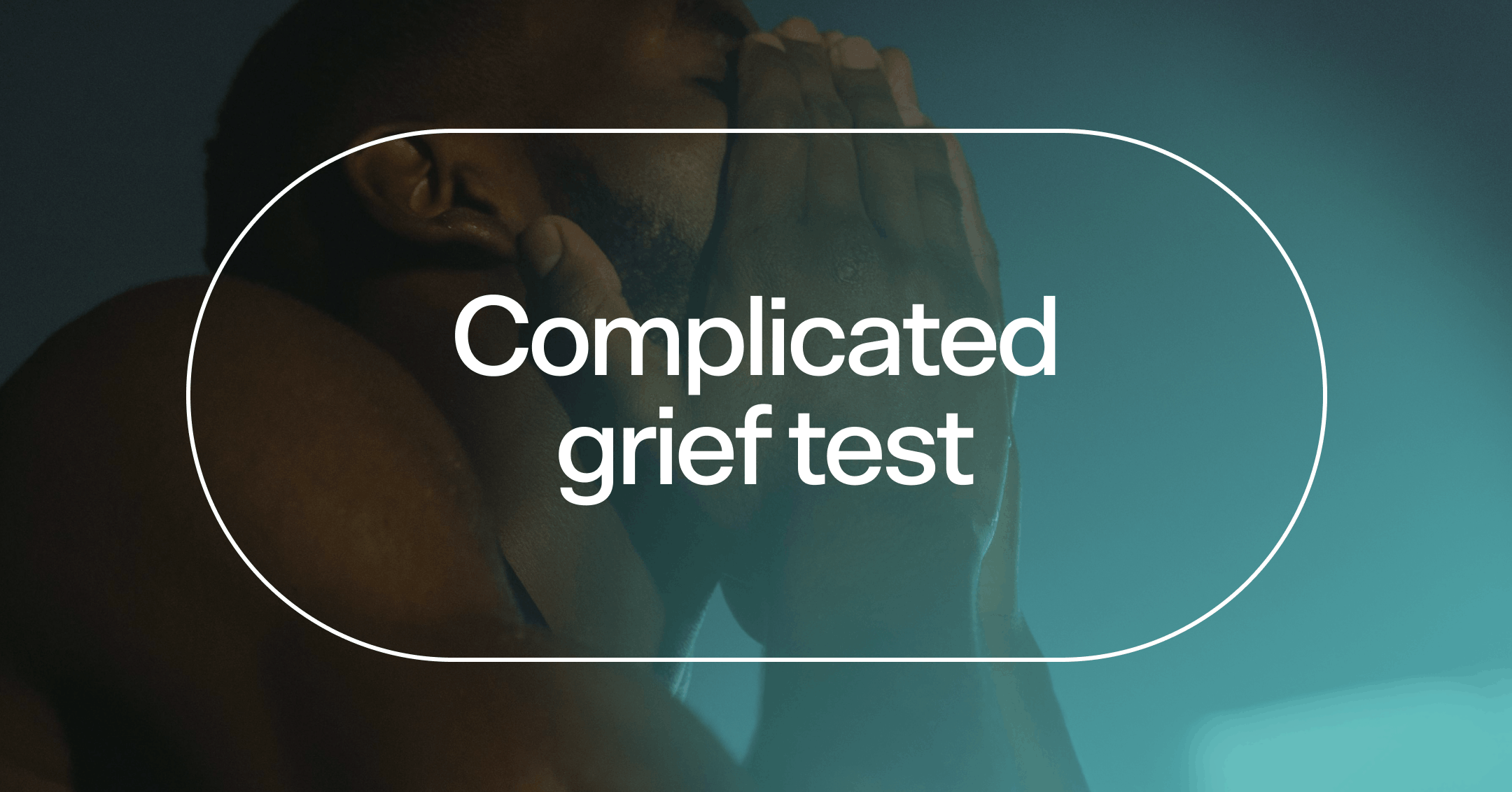{"key":"coverImage","fields":{"alt":"Image shows black text that says "What is EMDR therapy?" in the center of the screen. The text is against a blue background. The blue is a shade darker on the left side.","src":"https://s3.amazonaws.com/a.storyblok.com/f/329013/9670a212cb/what-is-emdr-therapy-rula.png"}}
Eye movement desensitization and reprocessing (EMDR) is a therapeutic technique that uses specific eye movements or tapping to help people process traumatic memories.
EMDR was originally developed to treat post-traumatic stress disorder (PTSD), but providers now use it to manage symptoms associated with anxiety, depression, and chronic pain.
Treatment typically consists of 6 to 12 sessions, and many people notice improvement after the first few sessions.
If you’re having difficulty managing trauma or distressing memories, you’re probably wondering how to process and heal from the pain. There is no quick fix for overcoming trauma, but there are therapeutic tools that can help support you in this process. One example is eye movement desensitization and reprocessing (EMDR).
How does EMDR work?
EMDR is a therapeutic technique that can help people cope with trauma and other distressing events. It combines traditional talk therapy and bilateral stimulation techniques, meaning alternating patterns of movement on the right and left side of the body. This approach can help people identify traumatic memories and reprocess them in a way that reduces their emotional impact.
EMDR is based on the adaptive information processing (AIP) model, which proposes that the brain stores traumatic memories in a way that prevents people from fully processing the information. Research shows that bilateral stimulation techniques, like side-to-side eye movements or tapping, can help calm the nervous system and engage the part of the brain responsible for processing sensory memories. Interestingly, this process is thought to mimic the rapid eye movement (REM) stage of sleep, which is responsible for memory consolidation and emotional processing.
During EMDR, your therapist will ask you to focus on a distressing memory while guiding you through bilateral stimulation techniques. Eventually, this exposure can change your reaction to the memory and allow you to heal from the fear and pain associated with the trauma.
The care you need, when you need it
Learn how Rula can support your mental health journey
What conditions can EMDR treat?
EMDR was first developed in the 1980s after psychologist Dr. Francine Shapiro made a chance observation that eye movements can reduce negative emotions associated with distressing memories.
Since then, numerous studies have concluded that EMDR is an effective treatment for post-traumatic stress disorder (PTSD) and other types of trauma. One review even found that EMDR was more effective than trauma-focused cognitive behavioral therapy (CBT) for alleviating anxiety and other PTSD symptoms. To date, both the World Health Organization and the American Psychiatric Association, among other leading medical organizations, recommend EMDR for the treatment of PTSD.
Although EMDR was originally developed to treat PTSD, providers now use it to help manage many other mental and physical health conditions, including:
Depressive disorders: One study found that EMDR can reduce the severity of suicidal thoughts in people with major depressive disorder.
Panic disorder: EMDR may help decrease the frequency of panic attacks and fear of experiencing a panic attack among people with panic disorder.
Obsessive-compulsive disorder (OCD): EMDR is an effective alternative to medication for improving obsessive signs in people with OCD.
Anxiety disorders: For people with anxiety disorders, EMDR can help manage anxiety-inducing memories and teach them to stay calm in similar situations.
Chronic pain: People with chronic back pain and a history of psychological trauma saw a reduction in back pain intensity and disability following EMDR therapy, according to one study.
What can you expect from EMDR?
EMDR therapy involves eight phases designed to help people identify and heal from emotional distress related to trauma. Treatment typically consists of 6 to 12 sessions, but some individuals may benefit from fewer or more sessions. And many people notice improvement after the first few sessions.
Resourcing
For some people, EMDR begins with a process called resourcing. Resourcing involves identifying coping methods to help you deal with difficult reactions during or between treatment sessions. Technically, resourcing is included in phase 2, but there are benefits to learning how to regulate your emotions before starting the eight phases of EMDR. Here are a few common resourcing techniques:
Container: Imagine a container, like a plastic container or balloon, to store upsetting thoughts, feelings, and images.
Protective figure: Think of a family member, friend, animal, or spiritual figure to protect you during times of distress. Reflect on their protective characteristics, how they act toward you, and how they keep you safe.
Safe, calm place: Imagine a place where you feel safe and calm. It can be a real place, or it can be imaginary. Close your eyes, and use all five of your senses until you feel like you’re actually in that safe, calm place.
Phase 1: Review history and treatment plan
The first session is an opportunity to discuss your history, including any problems, behaviors, or fears that you’ve been experiencing. Based on that information, you and your therapist will identify a “target memory” to treat during your sessions.
Phase 2: Preparation
Processing painful memories can be difficult, so your therapist will teach you coping mechanisms to help manage the emotional distress. Examples may include deep breathing, progressive muscle relaxation, and guided imagery exercises.
Phase 3: Assessment
During assessment, you’ll work with your therapist to identify negative beliefs, positive beliefs, and emotions related to the target memory.
Phase 4: Desensitization
Here, you’ll focus on your target memory while your therapist leads you through bilateral stimulation, like side-to-side eye movements or tapping.
Phase 5: Installation
During this phase, you’ll identify and focus on positive beliefs while continuing bilateral stimulation.
Phase 6: Body scan
After you strengthen your positive beliefs, you’ll search for any residual physical tension or discomfort associated with the traumatic memory. If there is any, you’ll continue with bilateral stimulation.
Phase 7: Closure
At the end of each session, you’ll discuss ways to manage your symptoms and maintain emotional balance between sessions. Your therapist may suggest activities like relaxation techniques or keeping a journal to document your thoughts and feelings.
Phase 8: Re-evaluate
During this final stage of EMDR, you’ll review your progress and discuss next steps in your healing journey. Based on this reevaluation, you may select new target memories or continue working on existing ones for additional processing and integration.
EMDR effectiveness, benefits, and limitations
Mental health professionals consider EMDR a safe and effective therapeutic approach for a variety of health conditions. Below are several leading benefits and possible limitations.
Potential benefits
EMDR can improve self-esteem, change negative thinking, and even decrease chronic pain among people with exposure to trauma. Another benefit is that EMDR doesn’t require people to discuss the details of their trauma. Instead, it focuses on changing the thoughts and emotions associated with the distressing experience.
Potential limitations
EMDR is best suited for people whose mental health symptoms are associated with distressing memories. It might not be the right fit for people with complex trauma, dissociative disorders, or health conditions that cause seizures.
It’s also worth noting that EMDR can trigger intense emotions and sensations during or after treatment for some people. This is a normal part of the healing process but may require additional support. If you’re experiencing any kind of distress, make sure to let your therapist know.
Dig deeper:
Find the right therapist with Rula
If you’ve experienced trauma or live with distressing thoughts, know that help is available. At Rula, we’re here to learn more about your needs so that we can connect you with a therapist who takes your insurance to help you manage symptoms and feel your best.
Plus, Rula’s network of over 15,000 therapists means you can be seen as soon as tomorrow. Ready to learn more about EMDR or other trauma treatments?
EMDR therapists near you
New York, NY – Houston, TX – Rancho Cucamonga, CA – Austin, TX – Chicago, IL – Los Angeles, CA – Columbus, OH – Portland, OR – Dallas, TX – Jacksonville, FL – Charlotte, NC – Denver, CO – Huntsville, AL – Philadelphia, PA – Seattle, WA – Find your city
Rula's editorial process
Rula's editorial team is on a mission to make science-backed mental health insights accessible and practical for every person seeking to better understand or improve mental wellness.
Members of Rula’s clinical leadership team and other expert providers contribute to all published content, offering guidance on themes and insights based on their firsthand experience in the field. Every piece of content is thoroughly reviewed by a clinician before publishing.





